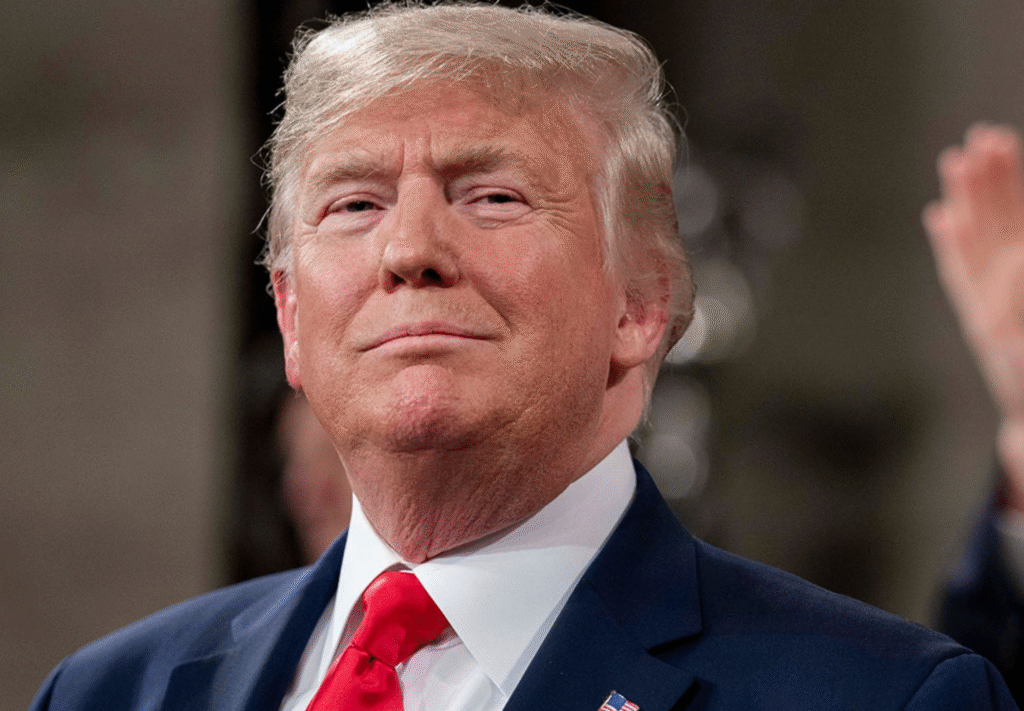World News
Airalo locks in $60M to expand its eSIM-based global roaming ‘marketplace’ on July 31, 2023 at 2:26 pm
Travel is back on the agenda after a Covid-19 hiatus, and today a mobile startup is announcing a healthy round of funding to capitalize on that. Airalo — which uses software-based eSIM connectivity to provide a wide range of lower-cost mobile data packages, nearly 700 in all, for international travellers — has raised $60 million in a Series B round that it will be using to expand its business.
The all-equity round, values Airalo at $250 million post-money, includes a long list of financial and strategic backers, a mix that speaks to who works with the startup as a business partner as a complement to their own direct operations.
e& Capital, the venture arm of e& (better known as the UAE-based carrier Etisalat), is leading the round with participation also from startup incubator Antler Elevate, Liberty Global, Rakuten Capital, Singtel Innov8, Surge (the early-stage fund run by Peak XV, formerly known as Sequoia Capital India and SEA), Orange, T.Capital (the venture arm of Deutsche Telecom), KPN Ventures, Telefónica Ventures, I2BF Global Ventures, GO Ventures, and LG Technology Ventures. This fundraise is a big step up for the company, which had previously raised just $7.3 million.
Although Airalo’s only just closed the round, the company is currently on a strong growth rate — 20% revenue growth month on month, with nearly 1 million downloads monthly for the past three months. And from what we understand, that’s leading to further interest from other potential investors. There are already discussions to bring extra backers on at a considerably higher valuation of between $800 million and $1 billion.
Launched in 2019, Airalo is one of a group eSIM providers that have received an injection of life thanks to handset makers like Apple promoting the software-based standard as an easier way for users to move from one mobile carrier to another, doing away with requiring customers to physically change the small SIM card in their phones.
eSIM has been both a blessing and curse: it means carriers might have a better chance of wooing away customers from their current providers, but it also means it’s harder to lock in the customers they have. Overall, for consumers it’s a huge win, since it means mobile operators have to be a lot more creative and competitive to win business.
And that’s where Airalo has been showing promise. After a very slow start due to the pandemic when COO Abraham Burak said growth basically “stalled” for two years, it started to pick up momentum in 2022.
Although carriers these days have become more savvy with building and offering travellers more cost-effective mobile data plans, many of these tend not to be as flexible, and thus cheap, as what consumers want or need. eSIM offerings promise an alternative: more granular offerings at smaller pricing increments.
Currently Airalo says that it has 5.1 million customers buying its eSIM products. These products are presented in a matrix of combinations covering some 200 countries, geographic regions, service durations, and data package sizes — in all currently totally 689 different combinations.
“We are seeing exponential growth in sign ups because travel is picking up,” said Burak, who co-founded the company with Bahadir Ozdemir (the CEO).
Burak and Airalo overall refers to this matrix of eSIM plans as its “marketplace”. That appears not to be a reference to multiple eSIM providers — Airalo is the only one selling to users — but to the large bazaar of carriers and carrier plans underpinning the deals.
Behind the scenes, Airalo builds out its many eSIM options by way of a network of carrier agreements that it brokers and then stitches together across the globe, some involving direct capacity purchased on a wholesale basis, and others involving reselling international roaming plans already structured by individual mobile carriers. Airalo has also built technology that measures demand and corresponding costs and pricing for these different eSIM packages.
If you are asking yourself, why would a carrier work with a third party like Airalo, which might compete directly against it? It’s for the same reason that a brand might sell through many retailers while also selling goods directly through its own-branded storefronts: if a customer is already looking somewhere else for a good mobile roaming plan before travelling, chances are the carrier has already lost that customer. Cutting a deal with Airalo gives that carrier a chance — albeit one at a smaller margin — to still win some business.
It’s enough of an opportunity that Burak said that there have been acquisition approaches already from the carrier world.
That’s not to say that all eSIM providers are swimming in opportunity, or necessarily capitalizing on it just yet.
Another big name in the space, Truphone, which had raised hundreds of millions of dollars, recently faced a period of significant turbulence when its biggest shareholder, Roman Abramovich, was slapped with international sanctions over his connections to Russia and he and other Russian shareholders were forced to sell their holdings in the company. Despite some very interesting deals it had on the books including services to banks and a partnership with Apple, Truphone had never made a profit in 15 years of operations, so its sale and its future definitely looked uncertain.
It look almost a whole year, but in the end Truphone was sold for £1 to two entrepreneurs, German businessman and tech entrepreneur Hakan Koç and former telecoms executive and private equity investor Pyrros Koussios, who pledged to invest more into the business and to expand the kinds of services it offers to enterprise customers.
(Indeed, stitching together data connectivity as an eSIM provider is not that far in concept from privacy-focused VPNs, which is something Truphone was already building for business customers, and may have been one of the interesting services that caught the eye of its Russian oligarch former owners.)
On that note, the idea of expanding what else an eSIM company can be providing to its customers beyond basic data is something that it seems Airalo is also taking on board, too. One new service it will be using the funding to help introduce is “Airalo Partners,” which it describes as “an innovative connectivity solution tailored to businesses and organizations across the globe.”
UAE has a number of international expat residents and itself has a population that is widely travelled, so it makes sense that an eSIM provider caught e&’s eye as an interesting investment opportunity.
“We are pleased to lead the Series B financing round for Airalo, a company that has come a long way over the past 18 months with a focus on providing exceptional customer experience,” said Kushal Shah, managing director, e& capital, in a statement. “We have complete confidence in Airalo’s ability to expand its user community, strengthen its diverse team, and introduce its latest product Airalo Partners, a groundbreaking connectivity solution for global businesses and organizations. We believe that Airalo has the potential to become a travel essential and are excited to support their journey towards becoming the definitive gateway to instant connectivity worldwide.”
Travel is back on the agenda after a Covid-19 hiatus, and today a mobile startup is announcing a healthy round of funding to capitalize on that. Airalo — which uses software-based eSIM connectivity to provide a wide range of lower-cost mobile data packages, nearly 700 in all, for international travellers — has raised $60 million
News
US May Completely Cut Income Tax Due to Tariff Revenue

President Donald Trump says the United States might one day get rid of federal income tax because of money the government collects from tariffs on imported goods. Tariffs are extra taxes the U.S. puts on products that come from other countries.

What Trump Is Saying
Trump has said that tariff money could become so large that it might allow the government to cut income taxes “almost completely.” He has also talked about possibly phasing out income tax over the next few years if tariff money keeps going up.
How Taxes Work Now
Right now, the federal government gets much more money from income taxes than from tariffs. Income taxes bring in trillions of dollars each year, while tariffs bring in only a small part of that total. Because of this gap, experts say tariffs would need to grow by many times to replace income tax money.
Questions From Experts
Many economists and tax experts doubt that tariffs alone could pay for the whole federal budget. They warn that very high tariffs could make many imported goods more expensive for shoppers in the United States. This could hit lower- and middle‑income families hardest, because they spend a big share of their money on everyday items.
What Congress Must Do
The president can change some tariffs, but only Congress can change or end the federal income tax. That means any real plan to remove income tax would need new laws passed by both the House of Representatives and the Senate. So far, there is no detailed law or full budget plan on this idea.

What It Means Right Now
For now, Trump’s comments are a proposal, not a change in the law. People and businesses still have to pay federal income tax under the current rules. The debate over using tariffs instead of income taxes is likely to continue among lawmakers, experts, and voters.
News
Epstein Files to Be Declassified After Trump Order

Former President Donald Trump has signed an executive order directing federal agencies to declassify all government files related to Jeffrey Epstein, the disgraced financier whose death in 2019 continues to fuel controversy and speculation.
The order, signed Wednesday at Trump’s Mar-a-Lago estate, instructs the FBI, Department of Justice, and intelligence agencies to release documents detailing Epstein’s network, finances, and alleged connections to high-profile figures. Trump described the move as “a step toward transparency and public trust,” promising that no names would be shielded from scrutiny.
“This information belongs to the American people,” Trump said in a televised statement. “For too long, powerful interests have tried to bury the truth. That ends now.”
U.S. intelligence officials confirmed that preparations for the release are already underway. According to sources familiar with the process, the first batch of documents is expected to be made public within the next 30 days, with additional releases scheduled over several months.
Reactions poured in across the political spectrum. Supporters praised the decision as a bold act of accountability, while critics alleged it was politically motivated, timed to draw attention during a volatile election season. Civil rights advocates, meanwhile, emphasized caution, warning that some records could expose private victims or ongoing legal matters.
The Epstein case, which implicated figures in politics, business, and entertainment, remains one of the most talked-about scandals of the past decade. Epstein’s connections to influential individuals—including politicians, royals, and executives—have long sparked speculation about the extent of his operations and who may have been involved.

Former federal prosecutor Lauren Fields said the release could mark a turning point in public discourse surrounding government transparency. “Regardless of political stance, this declassification has the potential to reshape how Americans view power and accountability,” Fields noted.
Officials say redactions may still occur to protect sensitive intelligence or personal information, but the intent is a near-complete disclosure. For years, critics of the government’s handling of Epstein’s case have accused agencies of concealing evidence or shielding elites from exposure. Trump’s order promises to change that narrative.
As anticipation builds, journalists, legal analysts, and online commentators are preparing for what could be one of the most consequential information releases in recent history.
Politics
Netanyahu’s UN Speech Triggers Diplomatic Walkouts and Mass Protests

What Happened at the United Nations
On Friday, Israeli Prime Minister Benjamin Netanyahu addressed the United Nations General Assembly in New York City, defending Israel’s ongoing military operations in Gaza. As he spoke, more than 100 delegates from over 50 countries stood up and left the chamber—a rare and significant diplomatic walkout. Outside the UN, thousands of protesters gathered to voice opposition to Netanyahu’s policies and call for accountability, including some who labeled him a war criminal. The protest included activists from Palestinian and Jewish groups, along with international allies.

Why Did Delegates and Protesters Walk Out?
The walkouts and protests were a response to Israel’s continued offensive in Gaza, which has resulted in widespread destruction and a significant humanitarian crisis. Many countries and individuals have accused Israel of excessive use of force, and some international prosecutors have suggested Netanyahu should face investigation by the International Criminal Court for war crimes, including claims that starvation was used as a weapon against civilians. At the same time, a record number of nations—over 150—recently recognized the State of Palestine, leaving the United States as the only permanent UN Security Council member not to join them.
International Reaction and Significance
The diplomatic walkouts and street protests demonstrate increasing global concern over the situation in Gaza and growing support for Palestinian statehood. Several world leaders, including Colombia’s President Gustavo Petro, showed visible solidarity with protesters. Petro called for international intervention and, controversially, for US troops not to follow orders he viewed as supporting ongoing conflict. The US later revoked Petro’s visa over his role in the protests, which he argued was evidence of a declining respect for international law.

Why Is This News Important?
The Gaza conflict is one of the world’s most contentious and closely-watched issues. It has drawn strong feelings and differing opinions from governments, activists, and ordinary people worldwide. The United Nations, as an international organization focused on peace and human rights, is a key arena for these debates. The events surrounding Netanyahu’s speech show that many nations and voices are urging new action—from recognition of Palestinian rights to calls for sanctions against Israel—while discussion and disagreement over the best path forward continue.
This episode at the UN highlights how international diplomacy, public protests, and official policy are all intersecting in real time as the search for solutions to the Israeli-Palestinian conflict remains urgent and unresolved.

 Entertainment4 weeks ago
Entertainment4 weeks agoWicked Sequel Disappoints Fans: Audience Verdict on For Good

 Entertainment4 weeks ago
Entertainment4 weeks agoAriana & Cynthia Say They’re in a ‘Non‑Demi Curious, Semi‑Binary’ Relationship… WTF Does That Even Mean?

 News4 weeks ago
News4 weeks agoMexico Bans Dophin Shows Nationwide

 Entertainment3 weeks ago
Entertainment3 weeks agoColombia’s ‘Doll’ Arrest: Police Say a 23-Year-Old Orchestrated Hits, Including Her Ex’s Murder

 Entertainment4 weeks ago
Entertainment4 weeks agoHow The Grinch Became The Richest Christmas Movie Ever

 Entertainment4 weeks ago
Entertainment4 weeks agoMiley Cyrus Is Engaged to Maxx Morando

 News4 weeks ago
News4 weeks agoUS May Completely Cut Income Tax Due to Tariff Revenue

 Business3 weeks ago
Business3 weeks agoLuana Lopes Lara: How a 29‑Year‑Old Became the Youngest Self‑Made Woman Billionaire





























